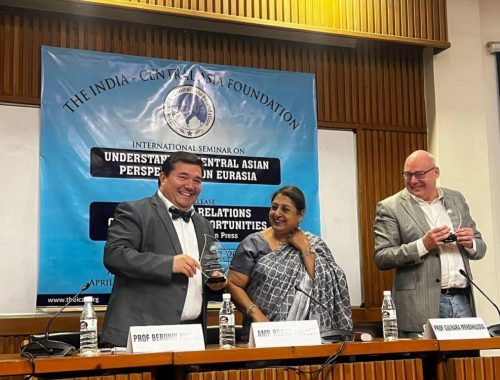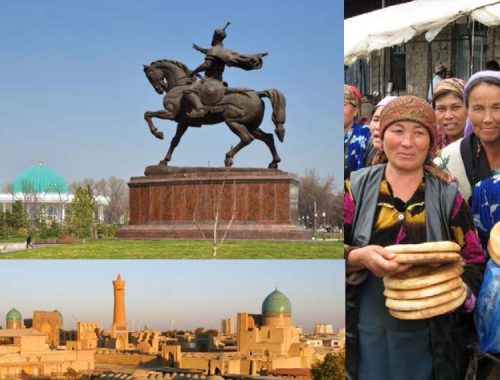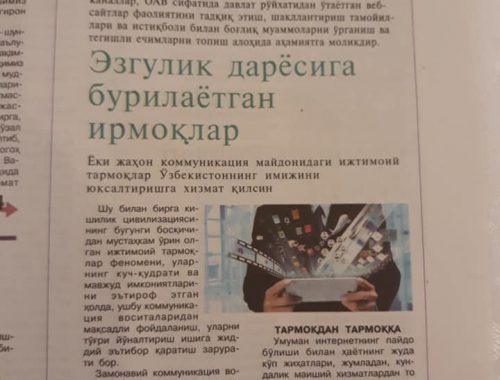INTRODUCTION (abstract of (PhD) thesis)
The aim of the study is to improve the principles of creating an image of Uzbekistan through foreign and national media.
The object of the study is the media image of independent Uzbekistan in foreign and national media.
The subject of the study was the views, tendencies, approaches and principles of the country’s image in foreign and national media in the years of independence.
The scientific novelty of the research is manifested in the following:
On the basis of a stable constant, they were improved on the historical, social, political, cultural and educational criteria for creating and forming a media image of the country;
On the basis of the differential approach, the prospects, the development of the country’s media image and the conditions for adaptation are determined according to the constructive mechanism;
Foreign and national media materials on the formation of the media image of Uzbekistan are grouped by means of a sapostatic analysis with similar examples from the countries of the West, Asia and the CIS;
On the basis of the conceptual approach, the peculiarity of the “regional image” in the conditions of Uzbekistan is determined, and also taking into account national, religious and economic characteristics such as the “capital of Islamic culture”, the “cradle of the ancient civilization”, the “heavenly gate”, and the “new industrial center”.
Approbation of research results. The results of the research are approved and discussed in the form of papers in more than 20 scientific and practical conferences and seminars, including 5 international and 17 republican scientific and practical conferences.
Composition and volume of the dissertation. The work consists of an introduction, 10 paragrofs, four chapters, a conclusion, a list of references (_____ titles) and an appendix. The volume of the thesis is 140 pages.
The first chapter of the thesis is called “The Basics of Forming the Image of an Independent Uzbekistan in Foreign Journalism”. It explores the theoretical and methodological foundations for the formation of the country’s image, comprehensively explored questions of the emergence of the concept of “state image” and its significance, the means for forming the media image of independent Uzbekistan and their theoretical foundations, as well as the diversity of relations between foreign media and reforms in Uzbekistan. In historical sources, the first image specialist mentions the assistant to the ruler of Moses, the priest Aaron (1445 BC) 1. Politician and Commander J. Caesar (102-44 years BC) was a genius in the art of influencing the masses. His “art” of inciting the people to his side with appeals to military campaigns and various stage performances was unmatched. A well-known Italian writer and politician considered in his teachings as a supporter of the creation of a strong state, N. Machiavelli (1469-1527), is drying up one of the first image theorists, that is, he is recognized as possessing a high “image sense” or high “image thinking”2. The essence of such thinking consisted in thinking among the masses of people and influencing them, in anticipating the desires of others, in establishing warm relations with people.
According to the results of direct observations conducted in more than 20 countries, the author of this study found that in the media of Western countries (Great Britain, Germany, the United States)3 there is a tendency to transfer unilateral, critical materials, while correspondents from CIS (Russia, Kazakhstan, Tajikistan , Kyrgyzstan and Azerbaijan) are changing according to the situation4, in the newspapers of the Asian countries (Japan, China, South Korea, India, Turkey, the United Arab Emirates, Egypt) are mostly printed positive articles5.
The second chapter of the thesis is titled “Trends in the emergence of the theme of a young independent country in the international media environment”, where the issues of the emergence of the theme of an independent Uzbek state in a foreign media environment, the principles, patterns of integration processes, the strengthening of the place and role of national journalism in enhancing the country’s image in the international media environment are studied. Speaking about the emergence of new states on the geopolitical map of the world in the 1990s, A. Shakoor, a leading researcher at the Pakistan National Institute of Society Management, said: “There have not been so many changes in world history in a very short time”6.
It is justified the fact that in the period of active globalization, not all societies that have renounced their independence and statehood can develop comprehensively, and those states that were formed as a full-fledged state clearly defined their identity, image, territory, ways and directions of development. This fact points to the need to pay close attention to the enhancement of the international media image of a young independent Uzbekistan.
The third chapter of the thesis is called “The place and importance of national mass media in creating an international image of the country”. On the issues discussed in this chapter, proposals and recommendations have been developed. Here, mass communication means a term with a broad scope and sphere of influence than traditional media, that is, newspapers and magazines, television and radio, which combines new concepts and differentiations from modern electronic means of communication. The chapter analyzes the importance of national Internet newspapers in shaping Uzbekistan’s image in the international media space, increasing the share of audiovisual journalism in the development of the country’s image (for example, mtrk.uz, mediabay.uz), as well as the development and prospects of the national on-line information segment (in the sample uza.uz, jahonnews.uz). The author of the dissertational work points out that these publications somewhat eliminate the existing information deficit about Uzbekistan inside and outside the country, the readers’ need for urgent and reliable information is being met. And also, it is pointed out that the interest of citizens in appealing to foreign information sources has decreased significantly in the search for unreliable, fake, negative information.
The fourth chapter of the thesis is entitled “Questions of creative mastership and objectivity in creating the image of independent Uzbekistan in the international media space” and it explores the issues of genre, language and visual skill in creating the image of the country, as well as the conditions and standards of objectivity when creating media image of young independent subjects, norms of professional journalist ethics.
Russian scientist A. Guslyakova divides the differences in the transfer of information between print and electronic media divided into 3 types. It is a:
1. Difference between extralinguistic parameters of information transfer.
2. Difference between print and electronic media texts.
3. Difference in general topics of media texts7.
As the author of the research proves, if in the past non-linguistic components of written texts included mainly graphic means, today, in connection with the appearance of electronic texts, the effective use of paralinguistic elements is necessary. It is separately emphasized that now they are not limited only to graphics, but they generalize in themselves audio and video materials too.

PRINCIPLES AND PERSPECTIVES OF FORMATION OF UZBEKISTAN’S IMAGE IN THE FOREIGN AND NATIONAL MASS MEDIA (in the case of media materials during the period of 1991-2017)
Бошқа саҳифалар

The Water Problem is the Backbone of Stability in Central Asia
26.04.2023
Shifting Sands – Portrayal of Uzbekistan’s Image in the Global Media Space
26.05.2018

